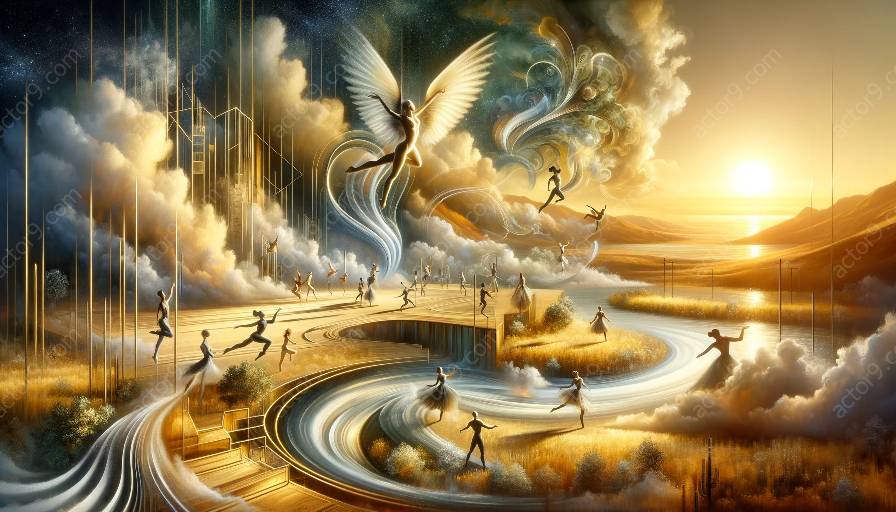Physicality and movement play a pivotal role in the mesmerizing world of circus performances. This topic cluster aims to delve into the intersection of physical theatre and circus arts, providing an in-depth exploration of the connection between these two art forms. Through this comprehensive guide, you will gain insights into the captivating blend of physical expression, acrobatics, and storytelling that characterizes circus performances.
Understanding Physical Theatre
Physical theatre is a form of performance that emphasizes physical movement, expression, and storytelling through the body. It often involves the use of gesture, dance, and mime to convey emotions and narratives without relying on traditional dialogue. Physical theatre artists harness their bodies as a primary tool for communication, allowing for a powerful and visceral connection with the audience.
The Intersection of Physical Theatre and Circus Arts
Circus arts encompass a diverse range of disciplines such as aerial acrobatics, contortion, juggling, and clowning, all of which require extraordinary physical skills. When physical theatre techniques intersect with circus arts, a unique and dynamic form of performance emerges. This fusion allows performers to infuse their acrobatic prowess with nuanced storytelling, adding depth and emotional resonance to their acts.
Physicality and Expression in Circus Performances
Circus performances are a captivating blend of physical prowess, artistry, and storytelling. Acrobats, aerialists, and contortionists utilize their bodies to convey narratives, evoke emotions, and captivate audiences. The physicality inherent in circus acts goes beyond mere spectacle; it becomes a medium for profound expression, exploring themes of strength, vulnerability, and human resilience.
Movement and Choreography
In circus performances, movement and choreography are meticulously crafted to synchronize with the overarching narrative and thematic elements. Each movement, whether it involves aerial feats, ground-based acrobatics, or object manipulation, is intricately woven into the choreographic tapestry, enhancing the emotional impact of the performance.
The Art of Physical Storytelling
Physical storytelling lies at the heart of both physical theatre and circus arts. Performers use their bodies to convey narratives, emotions, and experiences, transcending language barriers and cultural divides. The synergy between physical theatre and circus arts amplifies the potential for storytelling, allowing for multidimensional and evocative performances that resonate with audiences on a profound level.
Embodying Characters and Emotions
Circus performers, akin to physical theatre artists, embody a diverse array of characters and emotions through their movements. From the agile grace of an aerialist to the comic timing of a clown, each performer channels a distinct persona, infusing their acts with depth, humor, and pathos. This synthesis of physicality and character portrayal enriches circus performances, forging a powerful connection with spectators.
Conclusion
Physicality and movement lie at the heart of circus performances, merging with the art of storytelling to create captivating and emotionally resonant spectacles. The intersection of physical theatre and circus arts amplifies the expressive potential of these performances, enriching them with depth, meaning, and visceral impact. By exploring the nuances of physicality and movement in circus performances, one can gain a profound appreciation for the art form's ability to transcend physical feats and create profound connections through the language of the body.




































